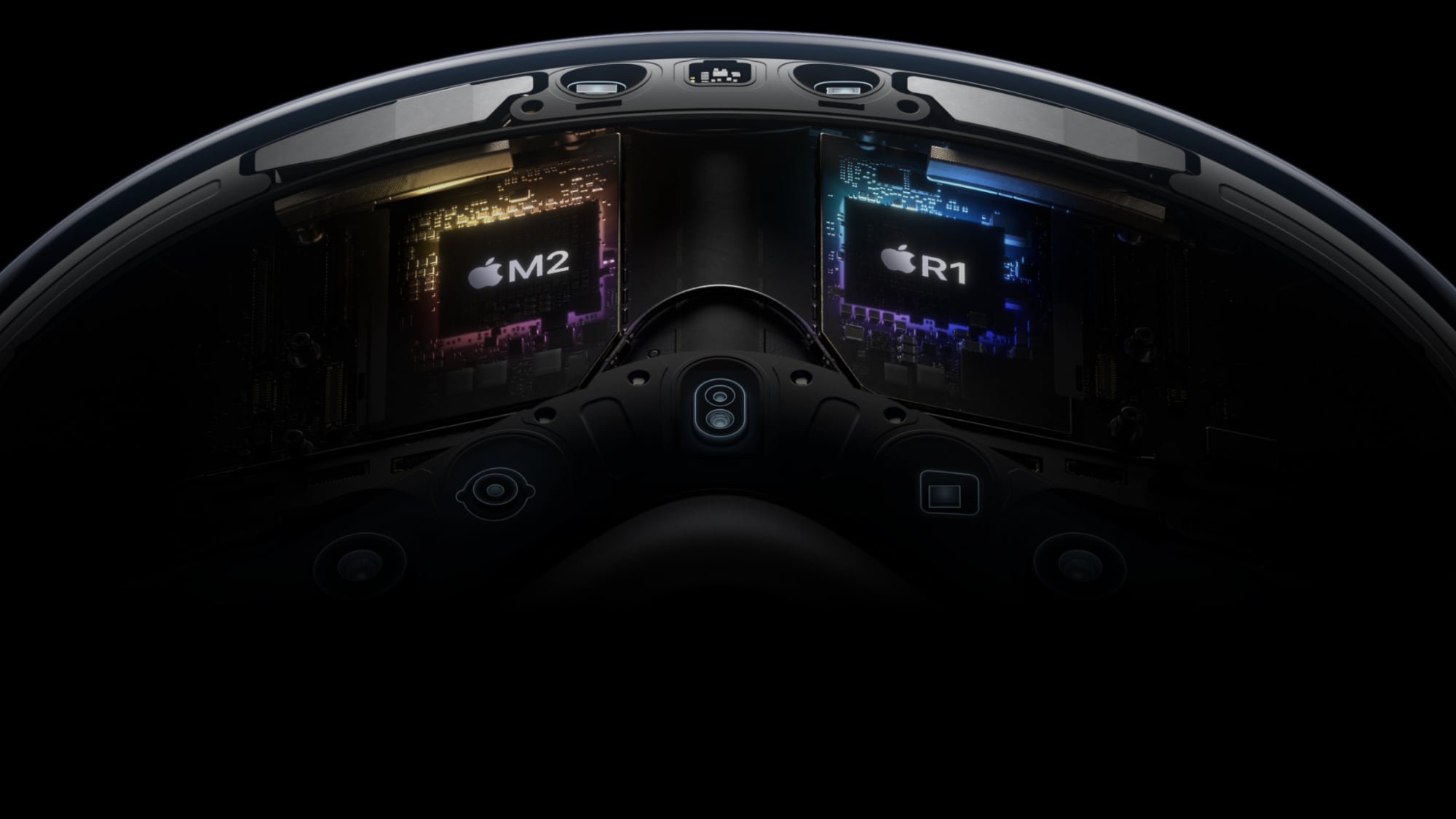
Apple today finally shared additional tech specs for its Vision Pro headset following the start of pre-orders in the United States.
Apple confirmed that the M2 chip in the Vision Pro is available with an 8-core CPU and a 10-core GPU, along with 16GB of unified memory.
As previously announced, the Vision Pro is also equipped with an all-new R1 chip that "processes input from 12 cameras, five sensors, and six microphones to ensure that content feels like it is appearing right in front of the user's eyes." Apple's tech specs reveal that the R1 chip has 256GB/s memory bandwidth.
Vision Pro is available with 256GB, 512GB, and 1TB storage options.
Vision Pro's dual micro-OLED displays deliver more than 23 million pixels, with 92% coverage of the DCI-P3 color space. Supported refresh rates include 90Hz, 96Hz, and 100Hz, with 24 fps and 30 fps video playback options.
The headset is equipped with two main cameras, six world‑facing tracking cameras, four eye‑tracking cameras, a TrueDepth camera, a LiDAR Scanner, four inertial measurement units, a flicker sensor, and an ambient light sensor. There is also a six‑microphone array with directional beamforming.
Vision Pro weighs 600 to 650 grams, depending on the Light Seal and head band configuration. The external battery packs weighs 353 grams.
Vision Pro is controlled with your hands, eyes, and/or voice, and it offers a variety of accessibility options. Optic ID provides iris-based biometric authentication.
The headset includes AirPlay support at up to 720p, allowing you to mirror your Vision Pro view to any AirPlay‑enabled device, including the iPhone, iPad, Mac, most Apple TV models, and AirPlay‑enabled smart TVs.
As previously known, the Vision Pro offers up to two hours of battery life overall, and up to 2.5 hours for video playback.
Other specs and features include Wi‑Fi 6, Bluetooth 5.3, HDR10 support, Spatial Audio with dynamic head tracking, and more.
Vision Pro launches in the U.S. on Friday, February 2, with pre-orders starting today. Apple previously announced that it would release the headset in additional countries later this year, but it's unclear exactly when or where.
For more details, visit the Vision Pro tech specs page on Apple's website.
Apple originally said AirPlay was supported at up to 1080p, but it now says up to 720p.
Article Link: Apple Shares Vision Pro Specs: Up to 1TB Storage, M2 Chip With 8-Core CPU, 16GB RAM, and More
Last edited:


